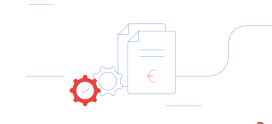29. August 2016
Digital magnets: Say goodbye to the network drive!

In many companies, unfortunately, rigid network drives still control the digital storage system. Employees are stuck in a deeply entrenched search pattern when it comes to finding the required document. Even in today’s digital era, it’s all about which folder, subfolder or “subsubfolder” (and we can continue) a document is stored in and what it is called. This not only wastes time and puts a strain on employees, it also increases costs and reduces the company’s ability to provide accurate information because the laborious task of searching the depths of the file system for documents still remains. Furthermore, you should be able to retrieve documents – without copies – in various contexts. Folders do not give you this option.
Outdated technologies influence people’s thinking patterns
Digital storage in a simple network drive is simply no longer the done thing. People, their thinking patterns and their working methods are too individual to work only in folders and file names. Therefore, an automated storage system is required for the digital workplace of the individual employee.
People as a database for metadata. Excuse me?
Document metadata (or also characteristics) is still stored in the employee’s head. If the document for customer “AB” is now contained in the related general project folder with the documentation of the project manager, is it already in archive because it is older or supposedly no longer up to date? Or was the document only in the draft stage and is therefore still located in the personal folder of employee “XY”?
“Misusing” the human brain as a database for metadata can be done of course (conditionally). However, massive risks are involved and this places the “human” resource under undue strain. Especially since the error rate is much higher compared to modern technologies.
One big drawback is often simply ignored: If an employee leaves the company, so too does the current “database” with the metadata of the company. Unfortunately, a similar scenario can suddenly arise if an employee falls sick or is involved in an accident. Of course, the documents themselves are still available and nowadays elaborate corporate guidelines are usually in place, instructing employees on naming conventions and storage rules; however, a certain proliferation or redundancy is always present. Trying to understand these systems wastes time and is simply unnecessary.
Digital magnets for automated storage
The major difference between the traditional file system and automated storage with digital magnets from AMAGNO is the elimination of previous ways of thinking and saving. In our Document Management solution, it no longer matters where a file is saved or what it is called, rather it is the document’s characteristics (metadata) and textual content (full-text recognition) that count.
All files are stored in a thematic and rights-based group (e.g. accounting). This occurs through a manual or automatic import via various different methods (drag & drop, mail import, scan import, etc.).
If a document is imported into the “Accounting” group, AMAGNO analyses its text and meta information, and links the document to the corresponding digital magnets. An invoice from supplier “XY” for project “AB” would e.g. be linked not only to the “Accounting” magnet, but also to the supplier “XY” magnet and project “AB”.
This makes it easier to access documents in daily business. Most importantly, all members of a given group access one single version of a document, not various different versions of it.
Transition from traditional file system to the digital magnets
Our Enterprise Content Management solution allows you to make an easy switch from the previous storage method in the network drive to the digital magnets from AMAGNO. To begin with, you can import your previous folder structures and then convert the structure to any number of magnets with freely-definable rules.



